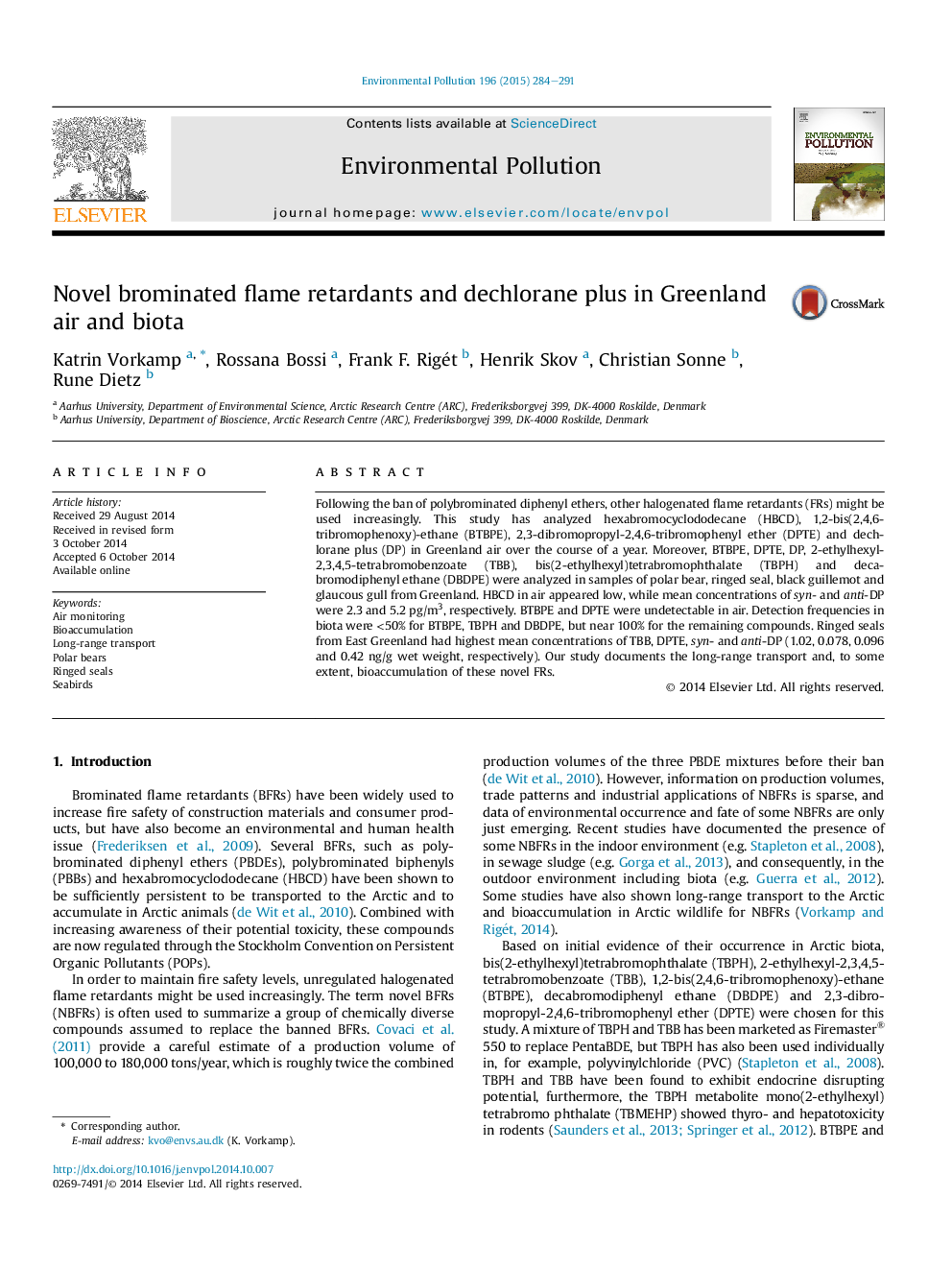| Article ID | Journal | Published Year | Pages | File Type |
|---|---|---|---|---|
| 6317938 | Environmental Pollution | 2015 | 8 Pages |
Abstract
Following the ban of polybrominated diphenyl ethers, other halogenated flame retardants (FRs) might be used increasingly. This study has analyzed hexabromocyclododecane (HBCD), 1,2-bis(2,4,6-tribromophenoxy)-ethane (BTBPE), 2,3-dibromopropyl-2,4,6-tribromophenyl ether (DPTE) and dechlorane plus (DP) in Greenland air over the course of a year. Moreover, BTBPE, DPTE, DP, 2-ethylhexyl-2,3,4,5-tetrabromobenzoate (TBB), bis(2-ethylhexyl)tetrabromophthalate (TBPH) and decabromodiphenyl ethane (DBDPE) were analyzed in samples of polar bear, ringed seal, black guillemot and glaucous gull from Greenland. HBCD in air appeared low, while mean concentrations of syn- and anti-DP were 2.3 and 5.2Â pg/m3, respectively. BTBPE and DPTE were undetectable in air. Detection frequencies in biota were <50% for BTBPE, TBPH and DBDPE, but near 100% for the remaining compounds. Ringed seals from East Greenland had highest mean concentrations of TBB, DPTE, syn- and anti-DP (1.02, 0.078, 0.096 and 0.42Â ng/g wet weight, respectively). Our study documents the long-range transport and, to some extent, bioaccumulation of these novel FRs.
Related Topics
Life Sciences
Environmental Science
Environmental Chemistry
Authors
Katrin Vorkamp, Rossana Bossi, Frank F. Rigét, Henrik Skov, Christian Sonne, Rune Dietz,
